Combat technology has officially left the drawing board and hit the pavement. Modern warfare demands vehicles that function as mobile command centers, armored lifelines, and technological testbeds rolled into one intimidating package. You’re looking at machines that make Hollywood’s wildest action sequences look quaint by comparison. Skip the marketing nonsense—these are the platforms genuinely changing how conflicts unfold and extreme terrain gets conquered.
16. Rheinmetall Boxer CRV: The Modular Monster (Exterior)
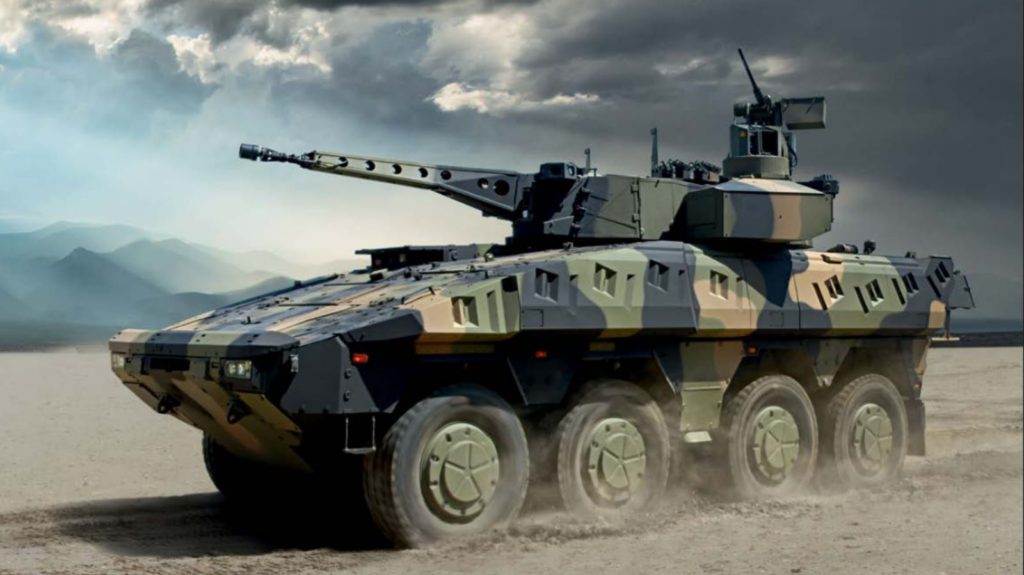
Armor adjusts based on threat levels without sacrificing firepower in this platform that treats protection like smartphone apps—customizable and upgradeable on demand. Surveillance systems enhance battlefield awareness for crews who understand the technology they’re operating rather than just pushing buttons. Digital integration improves command capabilities in ways that would have seemed impossible a generation ago. Government pricing typically ranges $4-6 million per unit, depending on configuration, with maintenance complexity increasing alongside capability, creating logistics challenges.
Rheinmetall Boxer CRV (Interior)
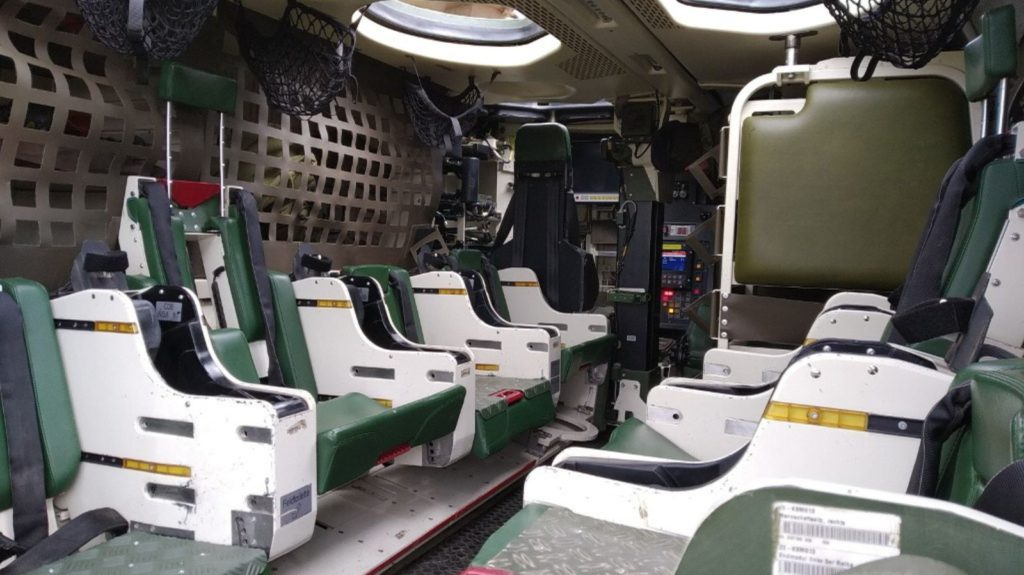
Modular mission equipment enables rapid reconfiguration between reconnaissance, command, and fire support roles while digital battle management systems coordinate multi-platform operations. Advanced sensor packages provide 360-degree situational awareness in urban and rural environments, with climate-controlled crew compartments maintaining operational effectiveness. Ergonomic workstations reduce crew fatigue during extended missions, while multiple communication systems ensure connectivity with higher headquarters when battlefield information becomes as important as raw firepower.
15. Alpha Motors Nightwolf Truck: The Green Machine (Exterior)
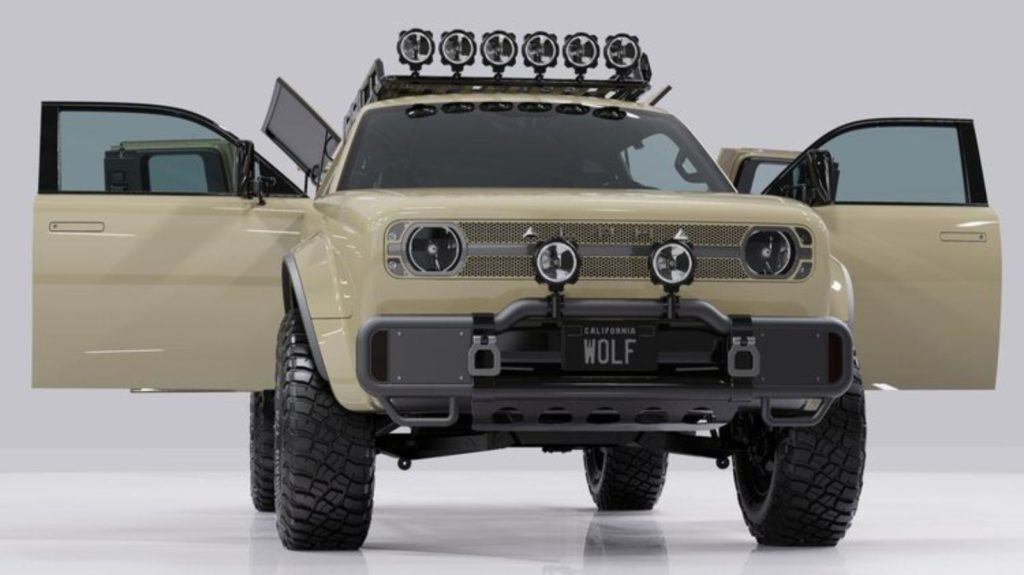
Electric power meets off-road capability in this platform that addresses environmental concerns without sacrificing performance in challenging conditions that test vehicle limits. Alpha Motor Corporation’s WOLF electric truck uses lightweight materials that enhance capability while reducing resource consumption throughout manufacturing processes and operational lifecycles.
Foldable solar panels extend operational range in environments where charging infrastructure doesn’t exist or has been destroyed. Central battery placement optimizes weight distribution for improved handling when terrain conditions test vehicle capabilities to their maximum limits. Estimated pricing starts around $150,000-$200,000 for civilian models, with military variants commanding premium pricing for specialized features.
Alpha Motors Nightwolf Truck (Interior)

Battery technology provides silent operation for covert missions while solar panels maintain charge during extended deployments away from traditional power sources. Electric drivetrain eliminates fuel logistics while reducing maintenance requirements compared to traditional powertrains that need constant attention and supplies.
Advanced energy management systems optimize range while maintaining power for essential equipment, plus lightweight construction materials, reducing environmental impact while maintaining structural strength for demanding applications, combining responsibility with tactical requirements.
14. T-14 Armata: Russia’s Next-Gen Gamble (Exterior)

Unmanned turrets represent Moscow’s attempt to revolutionize tank warfare by relocating human operators into separate armored capsules below the main gun. Fifteen hundred horsepower propels this platform to 75-80 kilometers per hour—fast enough to worry NATO tank crews across Europe. The 125mm smoothbore cannon delivers firepower while keeping crews safely removed from direct engagement zones. High production costs estimated at $4-9 million per unit have delayed widespread deployment, creating fascinating examples of cutting-edge technology meeting budget reality that prevents mass production.
T-14 Armata Gamble (Interior)
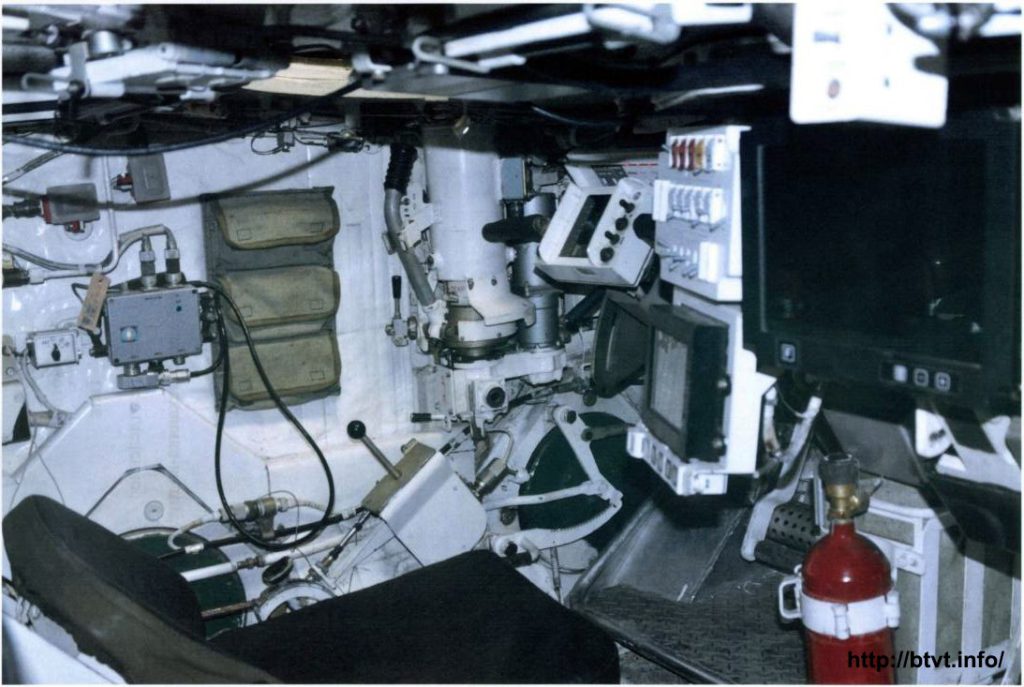
Armored crew capsule separates human operators from ammunition storage and main gun systems while automated loading eliminates exposure during ammunition handling operations. Advanced fire control systems enable engagement of multiple targets while the crew remains protected in a dedicated compartment with environmental controls maintaining effectiveness. Digital battlefield management systems coordinate with other units while maintaining situational awareness during extended combat operations in chemical, biological, radiological, and nuclear environments.
13. Oshkosh JLTV A2: The Shape-Shifter (Exterior)
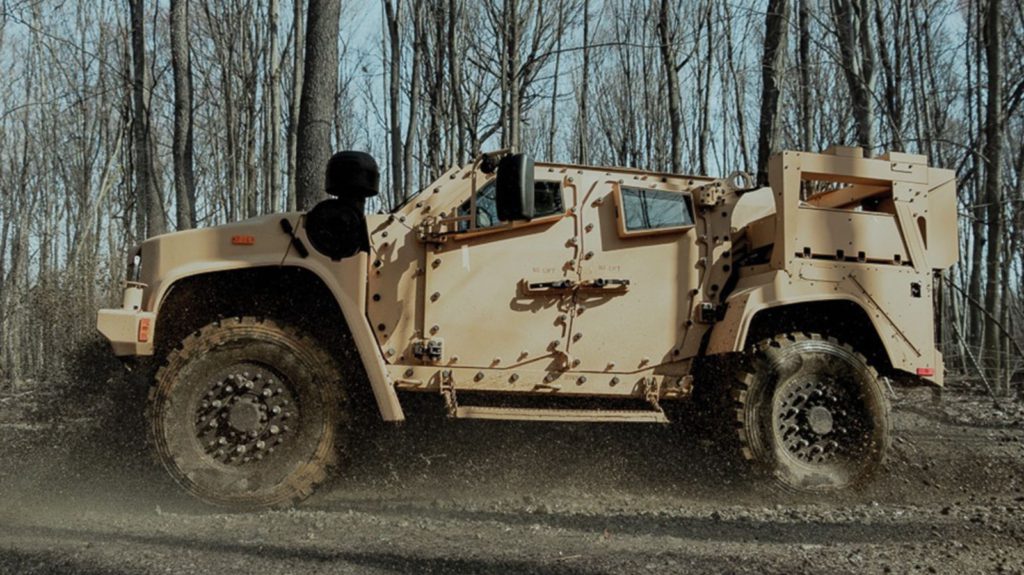
Versatility defines this platform that reconfigures faster than a Swiss Army knife in the hands of MacGyver during emergencies. Reconnaissance systems activate for scouting missions while seating arrangements adapt for transport duties without missing a beat or requiring complete overhauls. Weapon integration happens seamlessly when situations require immediate firepower application rather than diplomatic solutions. Protection standards make original Humvees look like cardboard constructions, with unit costs approximately $400,000-$500,000 per vehicle, depending on mission-specific configurations and armor packages.
Oshkosh JLTV A2 (Interior)
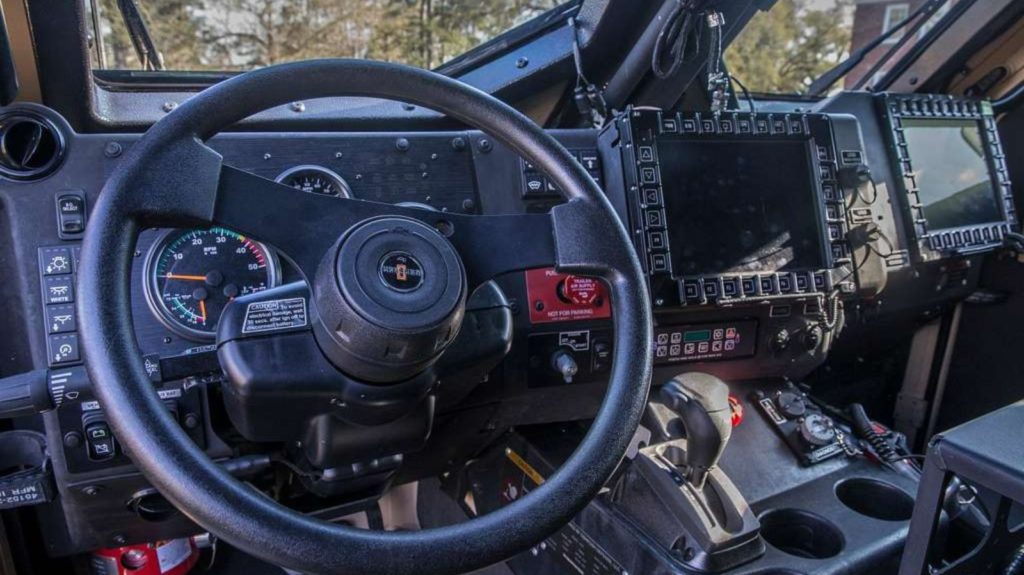
Advanced digital architecture supports multiple communication networks while maintaining information security protocols, plus a reconfigurable interior accommodating specialized equipment for various mission types. Environmental protection systems enable operation in chemical and biological threat environments, while crew ergonomics reduce fatigue during extended operations. Integrated logistics systems track vehicle performance and maintenance needs while coordinating with fleet management networks, providing excellence across diverse missions that earn every penny invested.
12. Rezvani Tank: Suburban Warfare (Exterior)
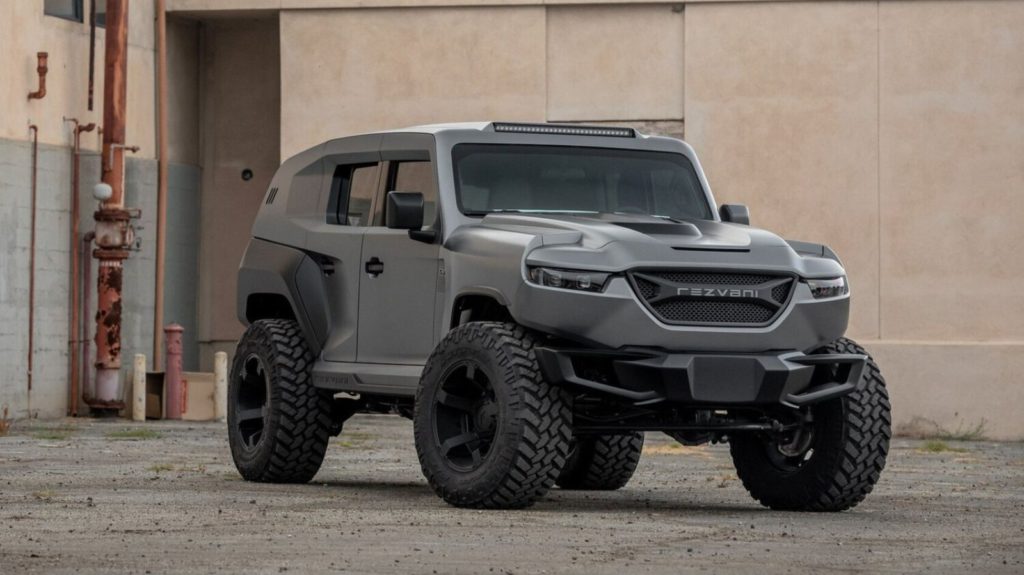
Picture military engineering designed for people whose biggest tactical challenge involves navigating mall parking lots during holiday sales. Inspired by military vehicles but styled for civilian intimidation, this SUV features an aggressive grille and sculpted body panels, creating something more futuristic than battlefield reality. Based on Jeep Wrangler bones, it retains body-on-frame construction with legitimate four-wheel drive capability, Fox 2.5-inch remote-reservoir shock absorbers, and massive 37-inch run-flat tires. Starting at $175,000, prices can reach $259,000 for Military Edition configurations with bulletproof protection.
Rezvani Tank (Interior)
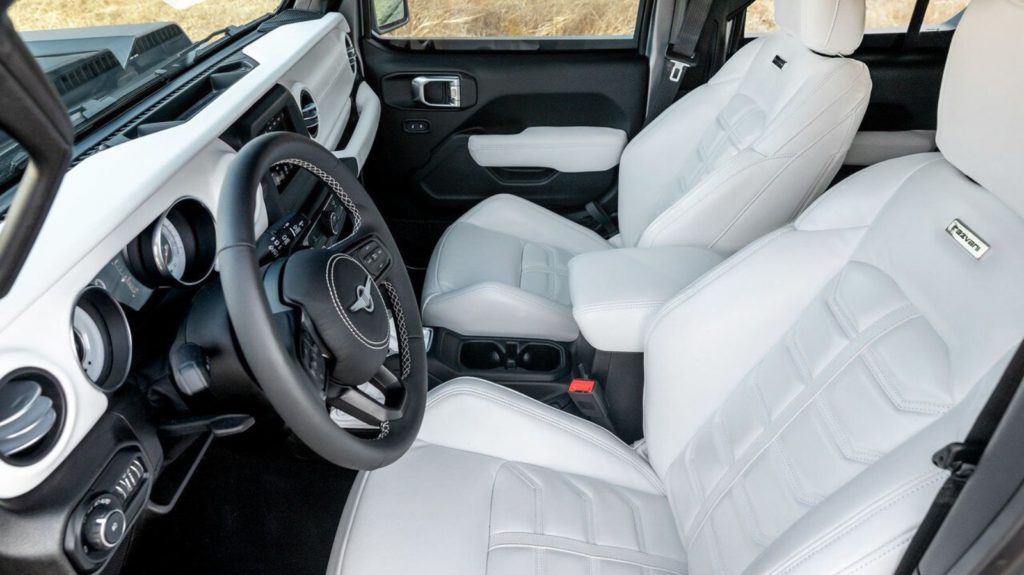
Ergonomically designed seats with over ten style options provide maximum comfort for hours of tactical grocery shopping with hand-stitched leather appointments. Head-up display keeps eyes on potential threats while a 7.9-inch infotainment display with Apple CarPlay provides civilian conveniences alongside thermal night vision from FLIR. Power-activated rear-opening suicide doors provide dramatic entry while advanced climate control and touchscreen systems create luxury matching the aggressive exterior stance.
11. Plasan Sand Cat: The Balanced Predator (Exterior)
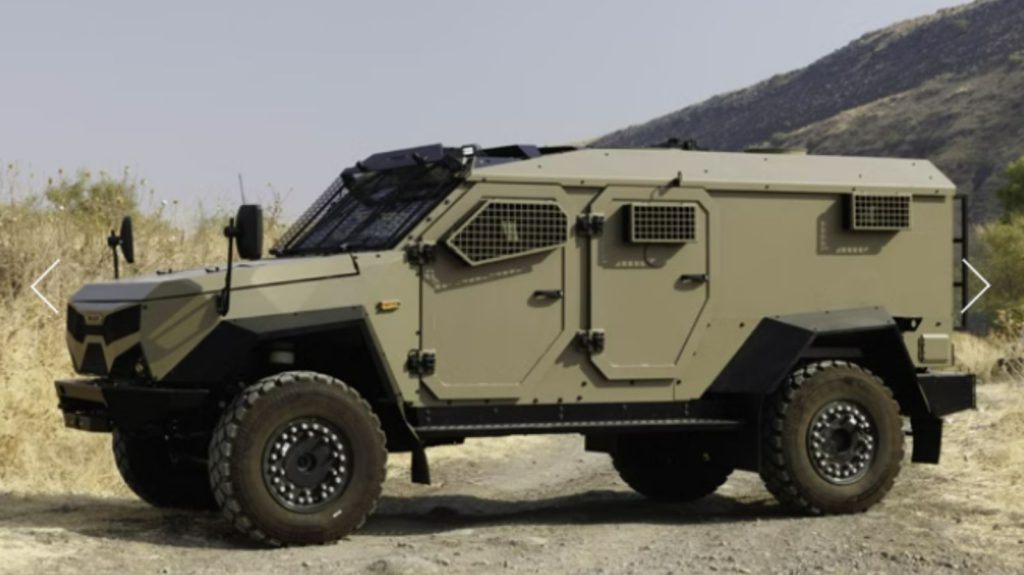
Ford F-Series chassis provides familiar maintenance advantages while armor blends of steel, ceramic, and Kevlar deliver protection that maintains tactical mobility. Agility enables navigation through complex terrain where larger vehicles become expensive, immobile targets waiting for destruction by enemy forces. Mission-specific customization transforms patrol vehicles into quick reaction platforms without complete redesigns that consume time and resources. High maneuverability allows operation in environments where size matters, and smaller usually means surviving longer than oversized alternatives. Military pricing typically ranges $300,000-$450,000, depending on armor level and mission equipment configurations.
Plasan Sand Cat (Interior)
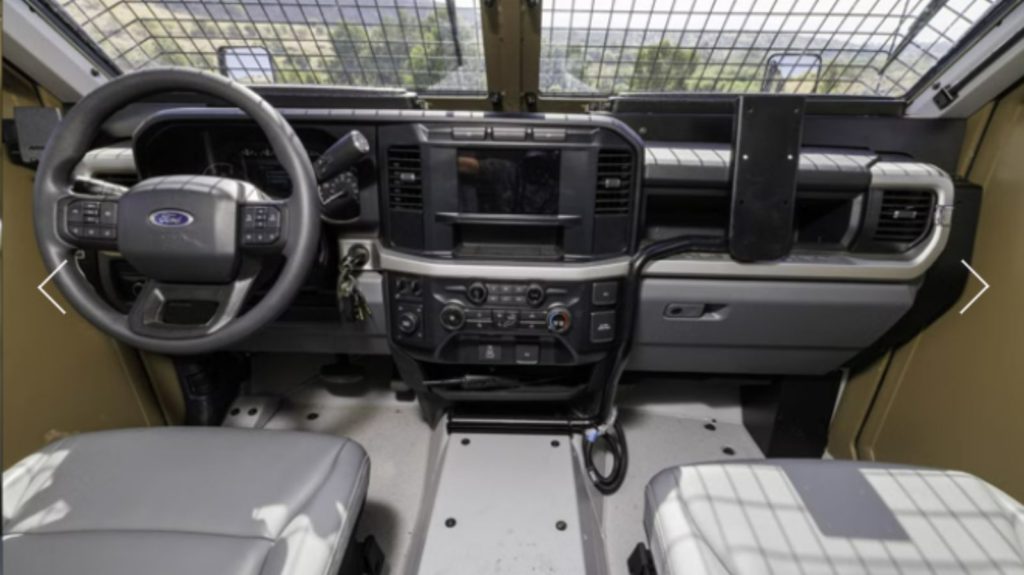
Lightweight armor maintains mobility while protecting against most small arms threats, plus independent suspension systems handle rough terrain, maintaining crew comfort. Weapon mounting systems accommodate various configurations from reconnaissance to direct fire support, while communication equipment maintains contact with headquarters, providing real-time intelligence. Climate control systems ensure crew effectiveness in extreme environments while ergonomic seating reduces fatigue, creating balanced protection and mobility platforms suitable for various mission profiles.
10. LCAC 106: The Beach Master (Exterior)
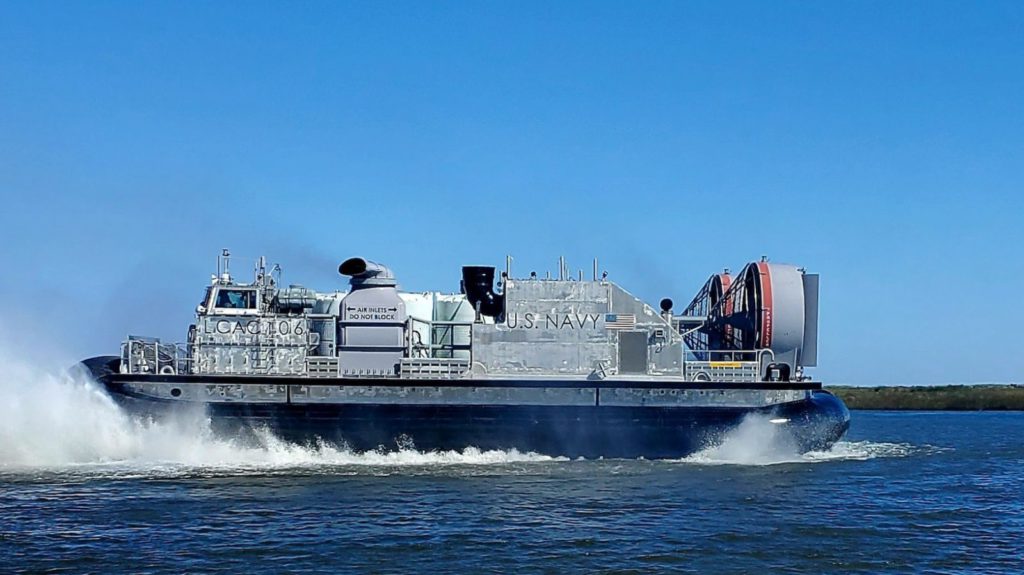
Amphibious operations have struggled with the same problem since D-Day: getting heavy equipment from ship to shore without creating expensive coral reefs. This air cushion landing craft hauls 60-75 tons of cargo, including M1 Abrams tanks, at speeds over 40 knots, making traditional landing vessels look stationary. Textron Systems engineered something measuring 87 feet 11 inches long by 47 feet wide that operates on high-pressure air cushion ejected downward and constricted by a flexible skirt. The new Ship-to-Shore Connector (SSC) program costs approximately $75-85 million per vessel, including development costs.
LCAC 106 (Interior)
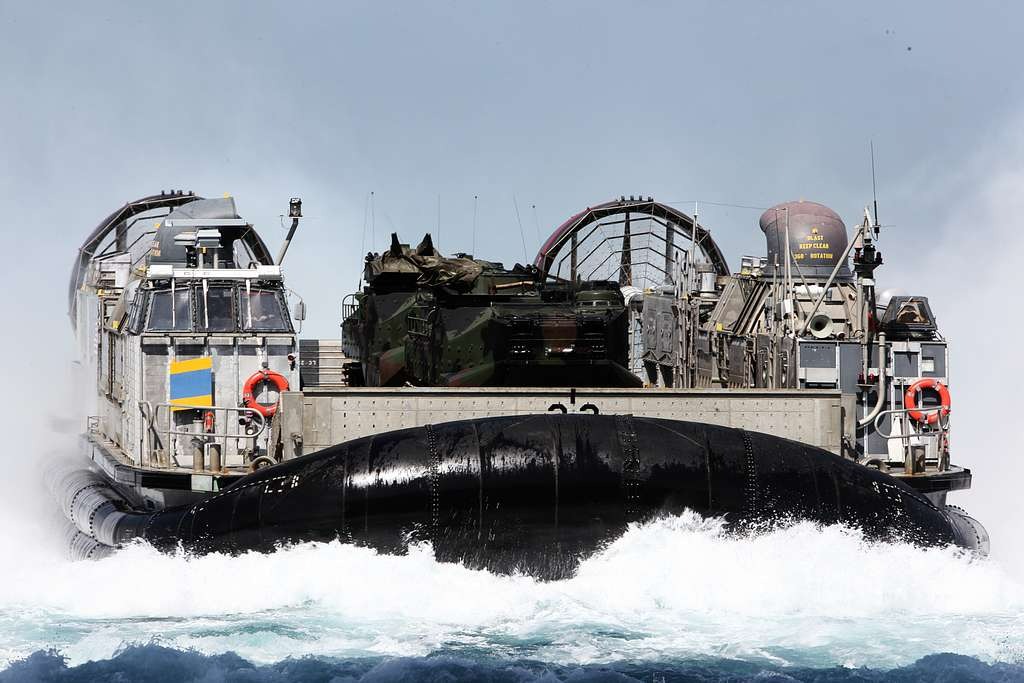
Air cushion technology enables operation over beaches, swamps, ice, and surfaces that stop conventional landing craft while requiring a five-person crew, including a craft master and navigator. Four Avco-Lycoming TF40B gas turbines supply 16,000 shaft horsepower, with two for propulsion, two for lift, plus two auxiliary power units providing electrical power. Climate-controlled crew compartments maintain operational comfort while a 5,000-gallon fuel capacity supports extended missions despite 1,000-gallon-per-hour consumption during high-speed operations.
9. Milrem Robotics THeMIS ROBUST UGV: The Expendable Hero (Exterior)
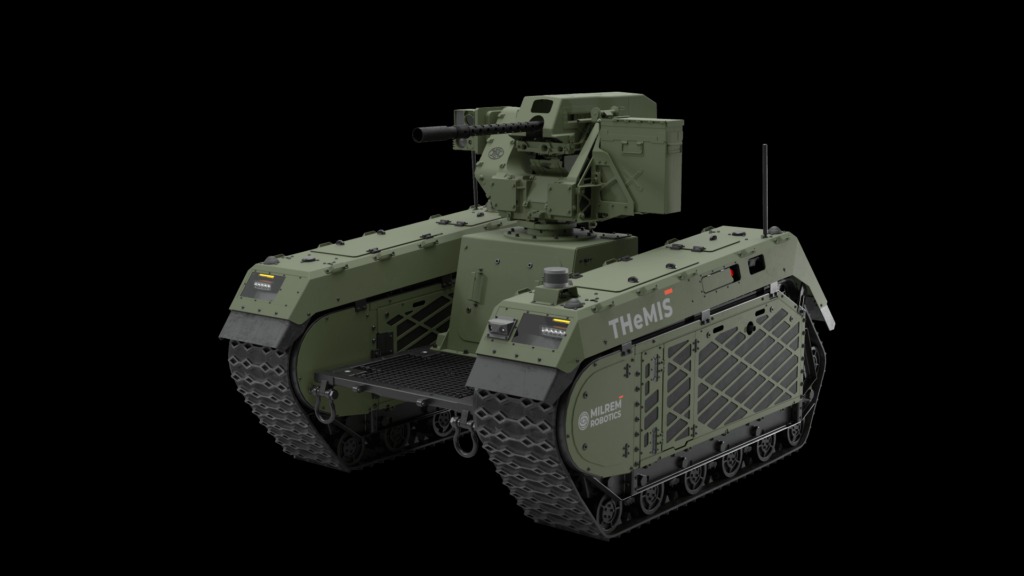
Route clearance operations benefit enormously when robots handle the jobs that traditionally put soldiers in harm’s way during dangerous missions. This Milrem unmanned platform detects threats and neutralizes explosives while human operators maintain safe distances from potential detonations that could prove fatal. High mobility and extended endurance make it ideal for missions that test equipment limits rather than human ones. Convoy security improves dramatically when dangerous tasks get delegated to machines without families waiting at home. Pricing available through defense contractors, typically $1-2 million per unit, including support systems.
Milrem Robotics THeMIS ROBUST UGV (Interior)

Autonomous navigation systems enable operation in GPS-denied environments while maintaining mission effectiveness, plus remote operation capabilities allowing human oversight without requiring physical presence. Modular payload systems accommodate various mission equipment, including detection sensors and neutralization devices, while advanced communications maintain constant contact with controllers. Environmental hardening enables operation in extreme conditions that would challenge human crews while storing mission data for analysis when dangerous battlefield jobs become automated.
8. Rezvani Arsenal: Paranoia on Wheels (Exterior)
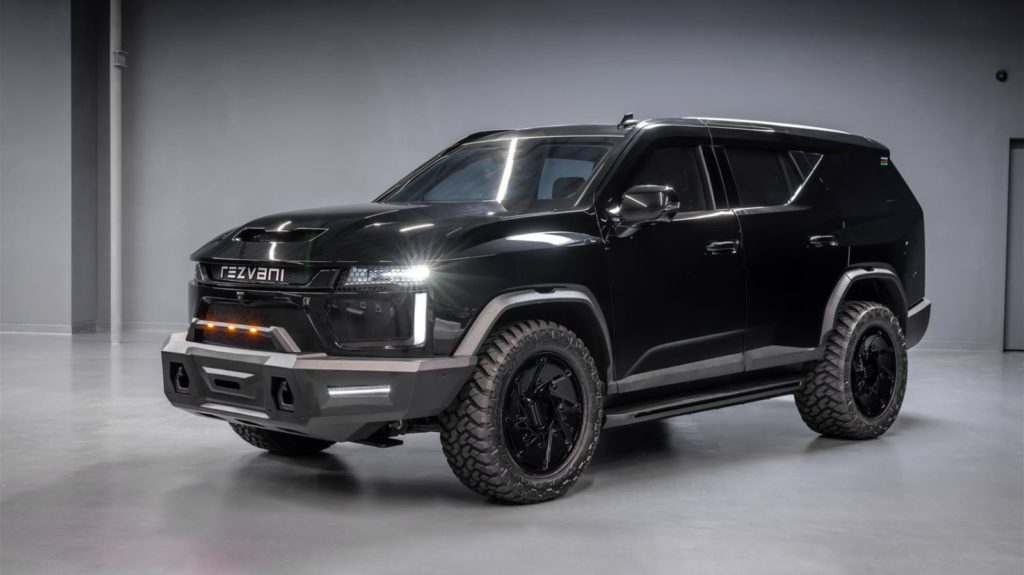
Advanced composite armor protects occupants from threats both legitimate and imagined in this luxury bunker that happens to have wheels. B6-rated lightweight armor capable of stopping high-caliber rounds and armor-piercing ammunition weighs one-third less than traditional ballistic steel while maintaining protection standards. Based on the Cadillac Escalade platform starting at $225,000, the Arsenal maintains elegant styling with a tall, tough stance incorporating sculpted body panels and steel bumpers with a built-in winch. Military Package configurations can push pricing beyond $400,000 with a full protection suite.
Rezvani Arsenal (Interior)

Seven-passenger layout ensures luxury travel with ventilated and heated leather seats standard across all configurations, plus a panoramic sunroof and a heads-up display. Built-in console safe stores valuables while onboard survival kit includes military-grade gas masks, bulletproof vests, helmets, hypothermia aid equipment, and first-aid supplies. Military-grade equipment includes thermal night vision from FLIR, electromagnetic pulse protection, smoke screen deployment, electrified door handles, magnetic deadbolts, and 19-speaker stereo systems maintaining Cadillac luxury.
7. FNSS M113 ZPT: Teaching Old Dogs New Tricks (Exterior)
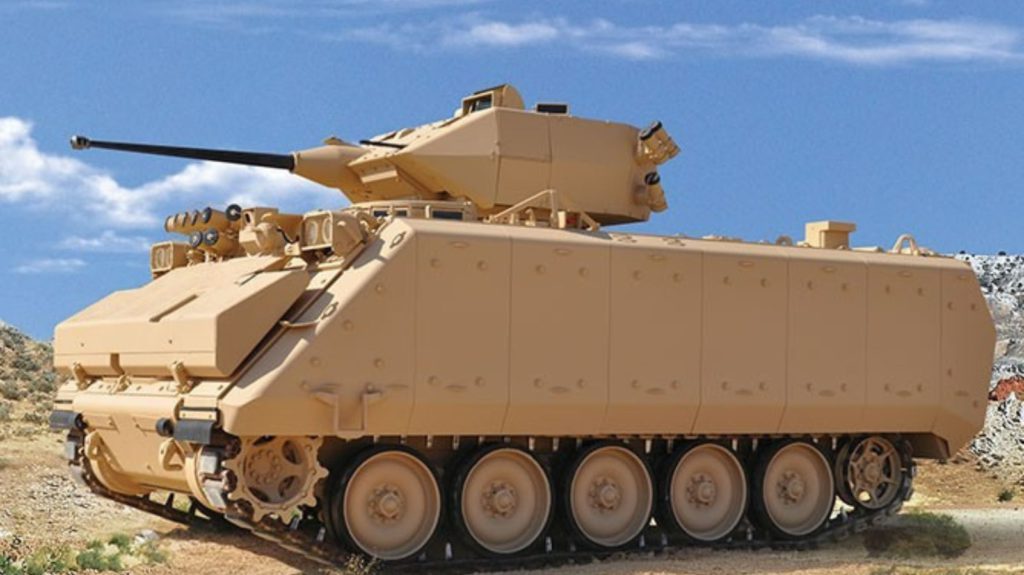
Modernization programs prove that sometimes the smartest investment involves upgrading proven platforms rather than starting from scratch with expensive new designs. Contemporary technology transforms aging M113 vehicles into relevant battlefield assets without requiring entirely new training programs that cost fortunes. SAP remote-controlled stations and next-generation electronics bring decades-old designs into current conflicts effectively. Enhanced navigation systems improve capabilities while respecting budget constraints, with upgrade packages typically costing $500,000-$800,000 per vehicle compared to $2-3 million for new platforms.
FNSS M113 ZPT (Interior)
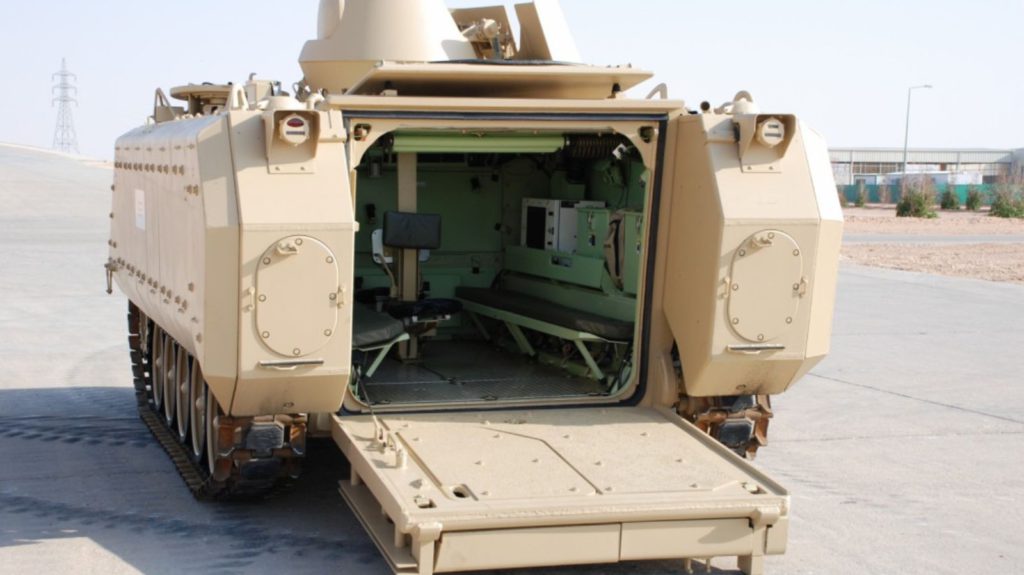
Digital fire control systems replace analog equipment while maintaining familiar operational procedures, plus enhanced armor packages improve crew protection without exceeding weight limits. Modern communication systems provide network connectivity while preserving interoperability with existing equipment that militaries already own and understand. Climate control improvements enhance crew effectiveness during extended operations, while digital displays improve situational awareness, combining proven chassis reliability with modern systems, creating cost-effective solutions.
6. IAG Jaws APC: The Street Shark (Exterior)

Built specifically for scenarios where diplomatic solutions have failed spectacularly, this armored personnel carrier features a conventional layout with the engine up front and the troop compartment in the rear. Based on the Toyota Land Cruiser 200chassis with opaque armor made from pre-certified ballistic-grade steel wrapping the entire structure. Available armor packages range from NIJ III-a/CEN B4 up to NIJ IV/CEN B7 protection against 5.56mm and 7.62mm NATO armor-piercing rounds from all angles. Pricing available only through direct government and law enforcement quotes, typically ranging $300,000-$500,000, depending on armor configuration.
IAG Jaws APC (Interior)
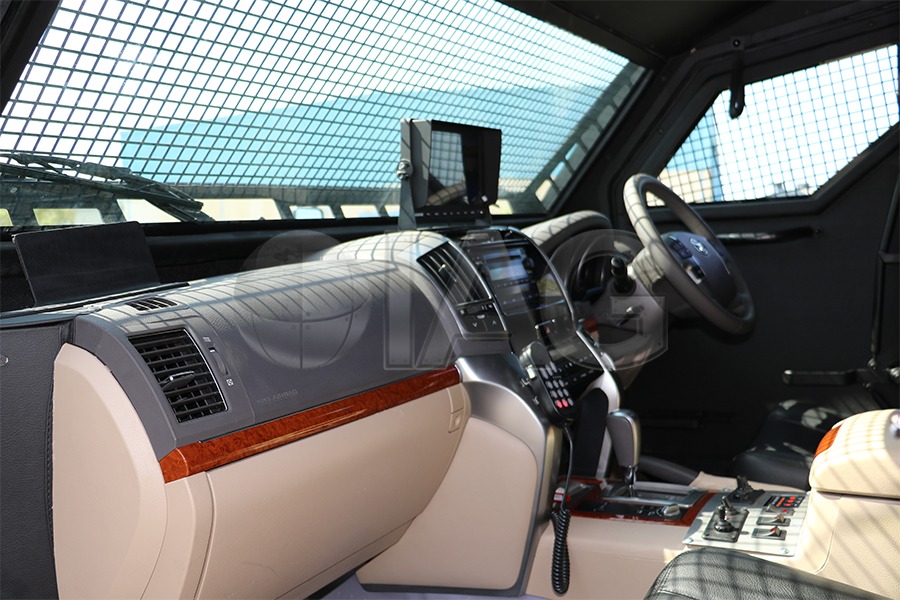
Eight fully equipped troops ride in blast-resistant seats with four-point harness systems designed to handle whatever IEDs can deliver. The seating layout adapts according to mission requirements while the HVAC system maintains optimal crew comfort during hostile operations. Commercial SUV-type dashboard, controls, two spare tire assemblies, auxiliary fans, and a heavy-duty 300AMP alternator support extended missions in dangerous environments.
5. Plasan Guarder: The People Mover (Exterior)
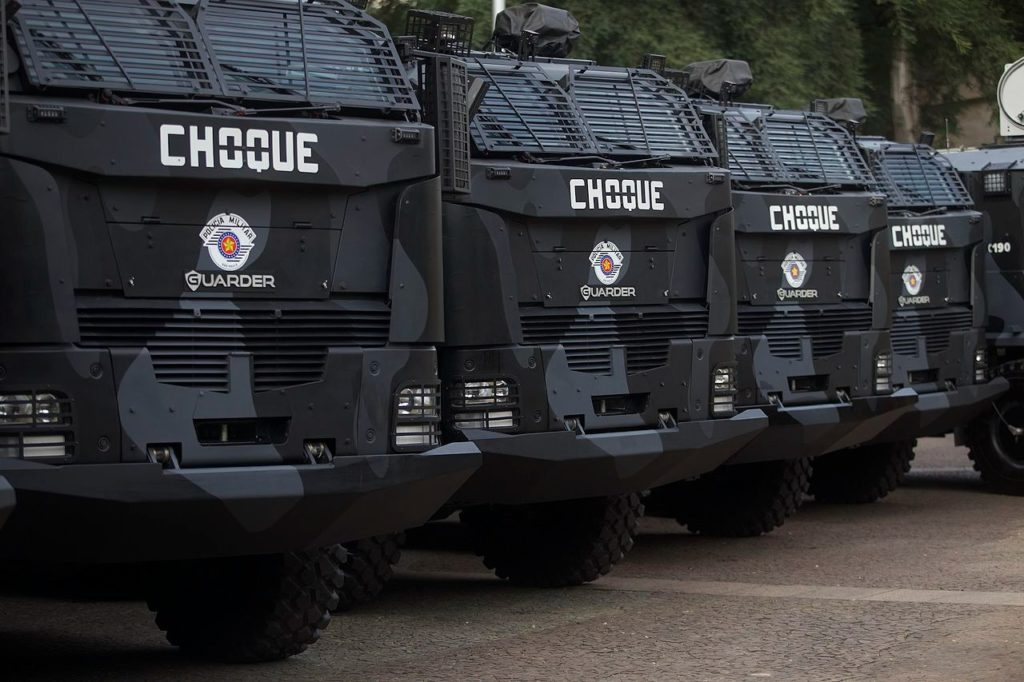
Twenty-four personnel ride in conditions that prioritize survival over comfort in this transport built for environments where routine travel includes ambush possibilities. Man truck chassis provides a reliable foundation while turbo diesel power ensures arrival at destinations despite hostile interference along dangerous routes. Enhanced armor protects occupants from various threats without making the vehicle too heavy for practical use across different terrain types. Surveillance systems maintain situational awareness during operations where surprises usually involve explosives rather than birthday parties. Military and law enforcement pricing typically ranges $400,000-$600,000, depending on armor specifications.
Plasan Guarder (Interior)

Blast-resistant seating accommodates fully equipped personnel while four-point harness systems secure troops during high-speed maneuvers through dangerous territory, plus environmental controls maintain comfort. Emergency medical equipment provides immediate care for casualties during evacuation operations, while crew stations provide optimal visibility through armored glass protection. Multiple exit points enable rapid deployment, while interior lighting systems support night operations when personnel transport involves active threat environments, where protection becomes the primary design consideration.
4. Toyo Tires Ferret: Vintage Metal with Modern Muscle (Exterior)

Cold War engineering meets 21st-century rebellion in this six-wheeled monster that started life as a humble 1959 British scout car. Action Vehicle Engineering crammed a Chevrolet LS V8 engine into the frame, transforming vintage reconnaissance into pure adrenaline. Matte black exterior coating covers angular bodywork while six massive Toyo Open Country M/T tires mounted on custom wheels dominate the aggressive stance. This one-off promotional vehicle represents an undisclosed investment from Toyo Tires, though similar custom builds typically cost $200,000-$400,000.
Toyo Tires Ferret (Exterior)
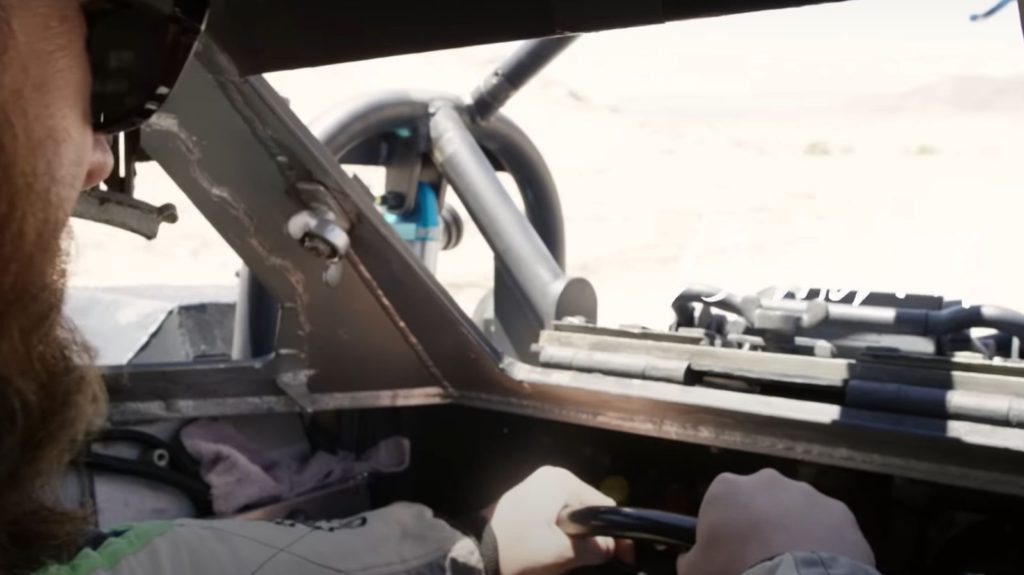
Hydraulic controls for the middle wheels operate from inside the cabin, giving drivers a tactical advantage at their fingertips during extreme maneuvers. The interior maintains military functionality with modern convenience upgrades, plus a custom-built grappling hook launcher attached to a winch cable. Original Ferret cabins were notoriously noisy compared to other scout cars, lacking proper sound insulation that Action Vehicle Engineering addressed while preserving utilitarian character.
3. Roshel Senator APC: The Practical Protector (Exterior)
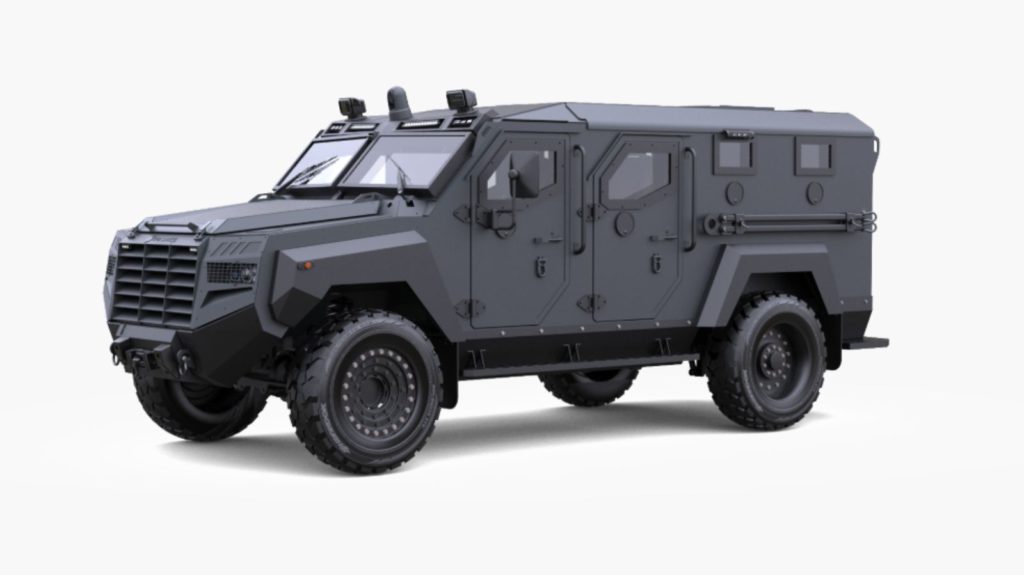
Ford F550 foundation delivers reliable performance without the attention-seeking styling that drives up costs while providing zero operational advantages during actual missions. CEN B7 ballistic protection shields occupants from significant threats without requiring specialized maintenance teams or exotic replacement parts that complicate logistics. Modular design enables mission-specific configurations that adapt to changing operational requirements without complete vehicle overhauls. Military and law enforcement applications benefit from balanced approaches to protection and mobility that respect budget realities facing most agencies. Starting price typically ranges $250,000-$350,000, depending on armor protection levels and optional equipment packages.
Roshel Senator APC (Exterior)
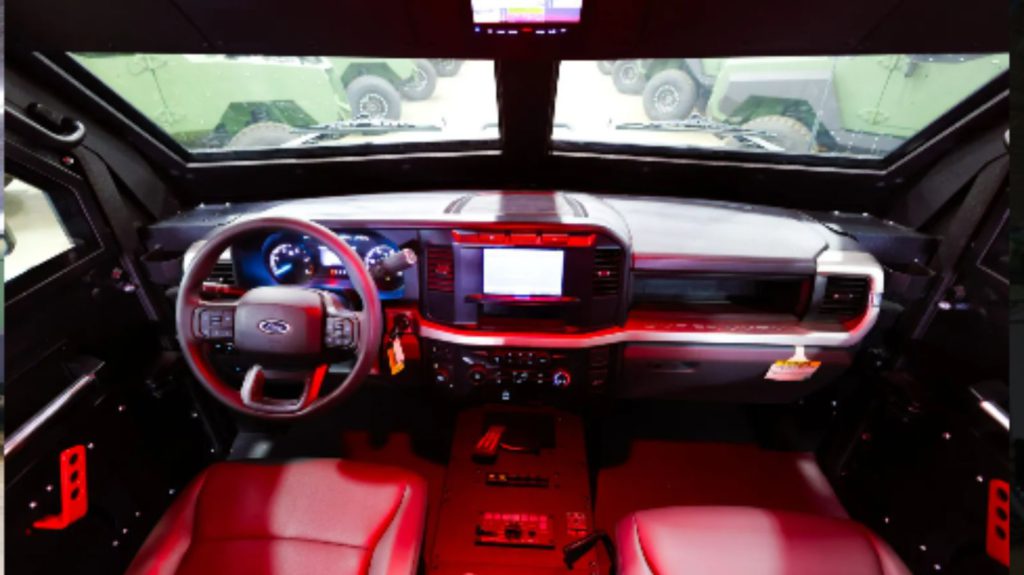
Commercial chassis components enable maintenance at standard service centers while specialized armor provides necessary protection, plus cost-effective solutions balancing capability with affordability. Proven reliability reduces operational costs while maintaining mission effectiveness through standard automotive parts availability, minimizing logistics complexity during deployment. Crew comfort features maintain effectiveness during extended operations while simple controls reduce training requirements, creating a practical design philosophy that produces dependable platforms for real-world applications.
2. Rheinmetall Survivor R: First On Scene (Exterior)
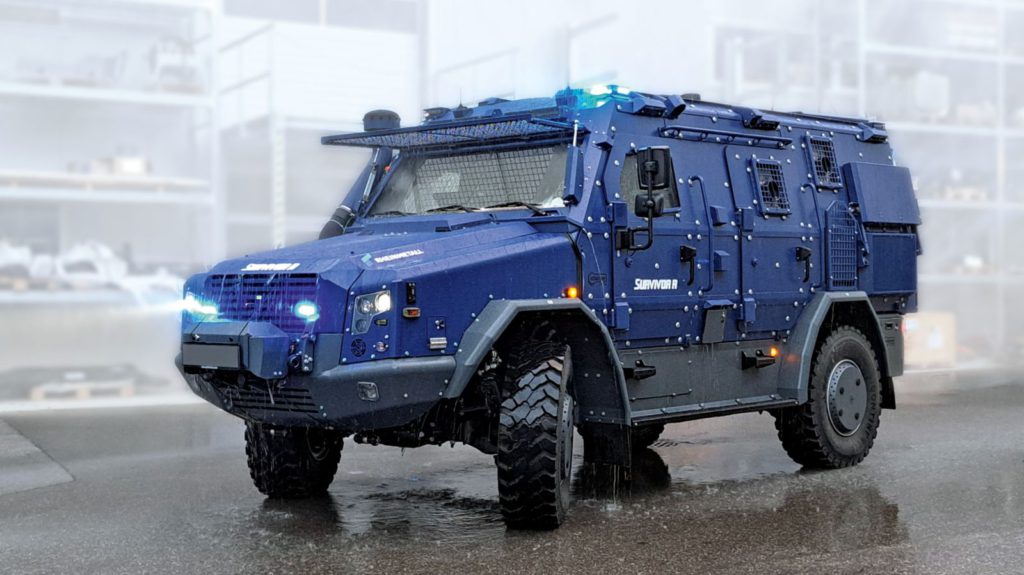
Special operations teams enter situations that other people flee in this mobile platform designed for crisis response scenarios requiring immediate action. Advanced ballistic protection and CBRN defense systems enable operation in environments where breathing unfiltered air could prove fatal to unprotected personnel. Ten personnel capacity provides a secure platform for missions where immediate response determines success or catastrophe during critical moments. Adaptive armor enhances survivability across threat scenarios from conventional weapons to chemical attacks targeting emergency responders. Government contracts typically range $800,000-$1.2 million per unit, depending on protection levels and specialized equipment packages.
Rheinmetall Survivor R (Interior)
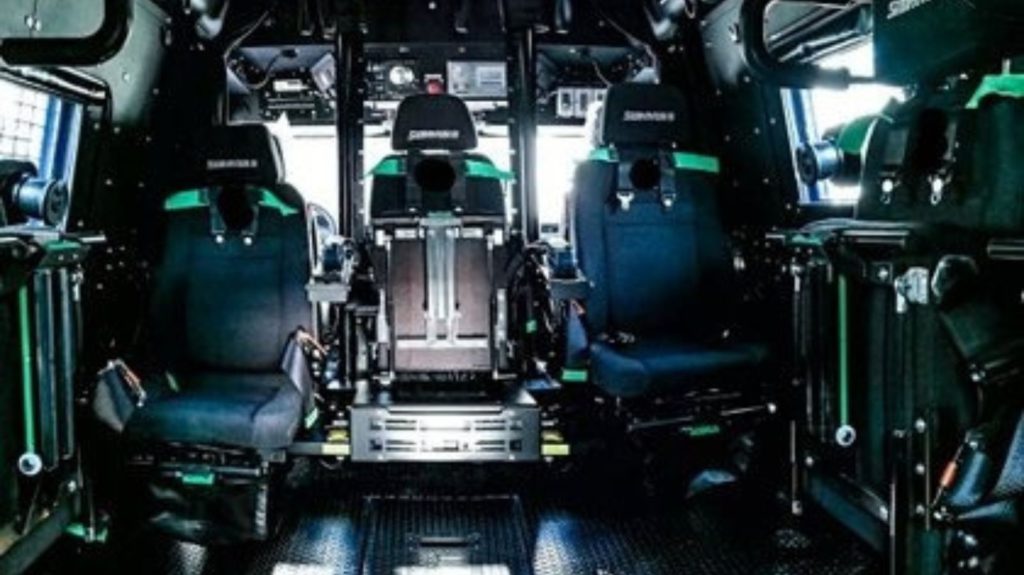
Mission-specific equipment mounting systems accommodate specialized tools for various crisis response scenarios, while advanced life support systems maintain crew effectiveness in contaminated environments. Digital coordination systems maintain contact with command centers during complex multi-agency operations requiring precise timing and communication protocols. Rapid deployment capabilities enable immediate response to developing situations, while protection systems ensure crew survival in hostile environments where first responders need military-grade protection to accomplish essential missions.
1. Patria Nemo: Death From Above, Reimagined (Exterior)

Remote-controlled 120mm mortar systems have officially made traditional artillery positions look like Civil War reenactments. This turreted beast eliminates manual handling and fixed positions that have defined mortar operations since your great-grandfather was dodging shells. Weighing approximately 1,500kg, the compact turret installs easily on light tracked chassis, wheeled armored vehicles, or naval vessels while providing modular ballistic protection. Government pricing is available through defense contractors, with complete systems typically costing $3-5 million, including platform integration.
Patria Nemo (Exterior)

Digital fire control systems eliminate human error while automated loading enables Multiple Rounds Simultaneous Impact missions with up to six grenades hitting targets simultaneously. Advanced ballistic computers calculate firing solutions faster than manual crews, with maximum range typically over 10km, depending on projectile/charge combinations. Remote operation capabilities allow crews to engage targets while maintaining safe distances, with time to fire the first projectiles upon halting just 30 seconds.